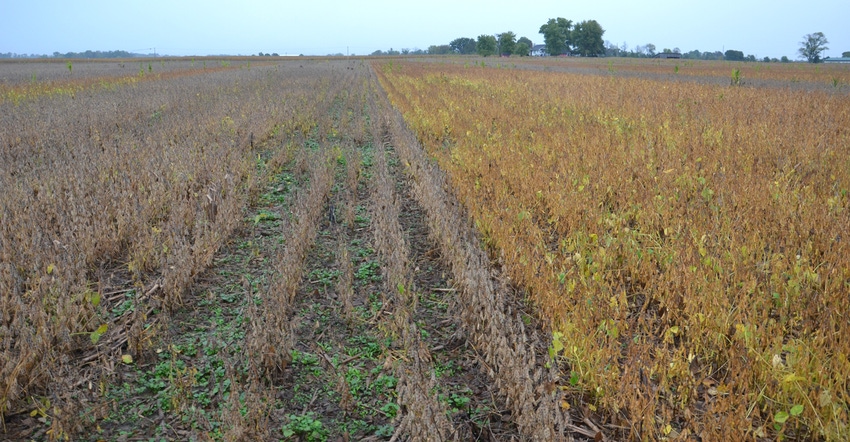
More soybeans were dried last year than most people can remember being dried in any other year. There are yield benefits for drying soybeans, as shatter loss ranges from more than you want if harvested at 13% to exceptionally high if harvested at 12% and lower. Harvesting at higher moisture results in less shatter loss.
Experts expect lots of soybeans to be dried again in 2019, but it won’t be to prevent yield loss due to shattering. This year, none of the calculations on increased income from reduced shatter will likely matter. Wet, poor planting conditions pushed plant development and harvest dates late enough in many areas that drying may be required — not optional.
What’s different about drying high-moisture soybeans? Gary Woodruff, district manager for GSI, says they’re high in oil compared to corn, and therefore require special handling during drying.
First, they require drying down to 13% for storage, he says. That isn’t possible in most areas in a normal year with natural airflow in the bin from fans alone due to the low humidity required. Hence, drying with heat is required.
Second, soybeans can’t sit for very long at higher than 13% moisture or at high ambient temperatures without degradation.
Drying tips
Here are recommendations based on how each dryer type affects drying of beans. If you haven’t dried many soybeans before, these tips may be useful.
Bin drying. All drying bins need 1 cubic foot per minute per bushel of airflow when the bin is full. Sidewall heights should be 21 feet or less. Using just a fan, often called natural air drying, will likely not work due to how late soybeans will likely be dried with ambient air conditions.
Adding a low-temperature (5 to 10 degrees F) upstream burner to a centrifugal fan can overcome late-season conditions. A small amount of heat can overcome humidity, allowing beans to reach 13% while drying 24 hours a day. A manual humidistat can be used, but you’ll probably have to use a chart and reset it for night and day operation.
An equilibrium aeration controller with fan burner control is best. It makes everything automatic. This unit can bring soybeans down to 13% usually in two to four weeks, assuming 18% to 22% initial moisture.
Trying to take more than 1 or 2 points out of taller bins or bins where airflow is not 1 cfm per bushel isn’t recommended. Soybeans will lose quality during the long drying process. Those at the top could stay wet for weeks or months before reaching a safe moisture state.
If a Stir-Ator higher-temp bin dryer (100 to 120 degrees F) is used, do the drying in batches. Limit depths to 7 to 10 feet at a time. Move dry beans to final storage before another batch is dried.
Portable and tower dryers. Soybeans shouldn’t be dried on all heat and then cooled in a bin. The dryer should be operated dry and cool, with 13% cooled soybeans exiting the dryer into the storage bin.
Plenum temperatures will be much lower than with corn — no higher than 120 to 140 degrees F. Because there’s often no regular operation charts for soybeans at these plenum temps, figure the dryer will take out half as many points of moisture as with corn.
If the dryer should run at 30% unload speed to get 10 points of removal in corn, you’ll get 5 points of removal at the same setting with soybeans.
About the Author(s)
You May Also Like




